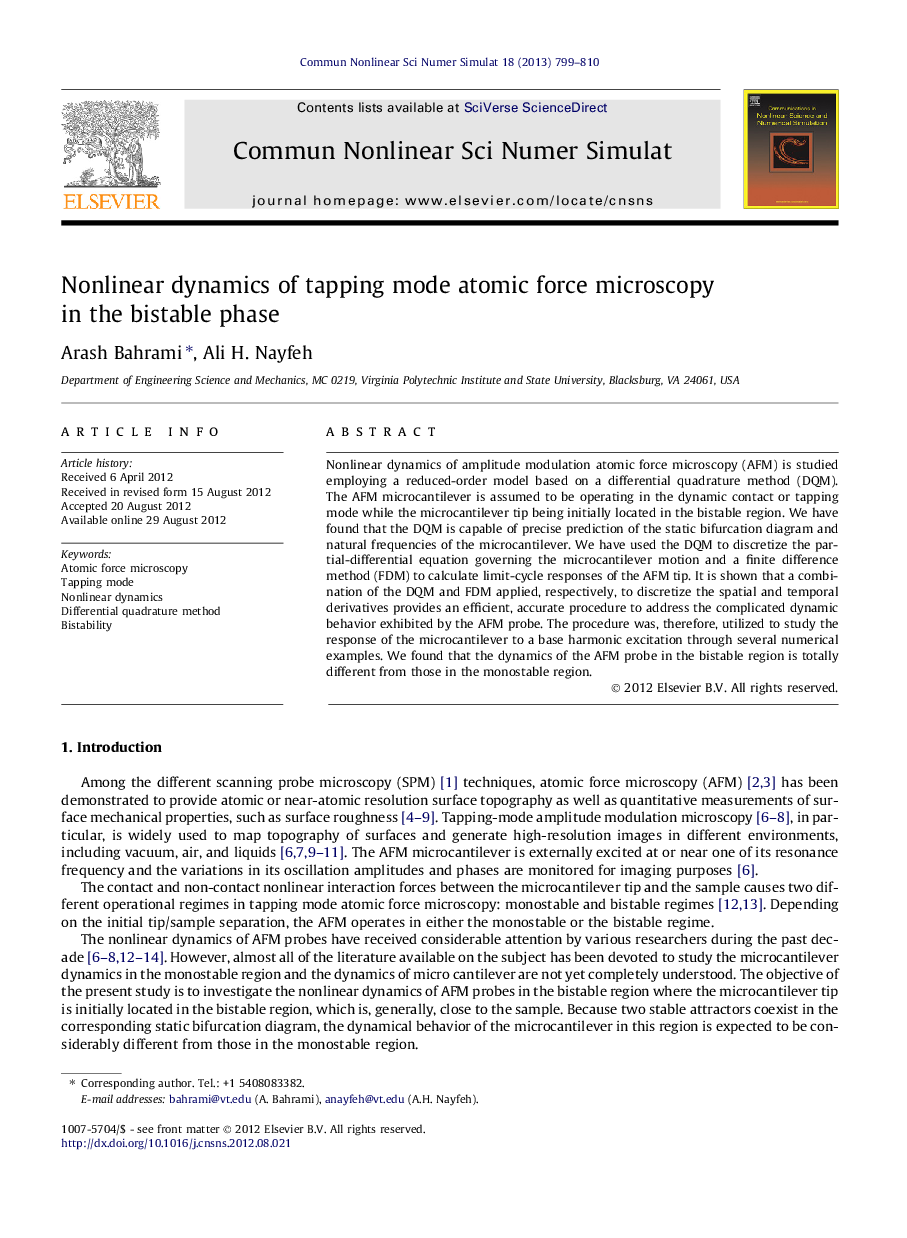| Article ID | Journal | Published Year | Pages | File Type |
|---|---|---|---|---|
| 755880 | Communications in Nonlinear Science and Numerical Simulation | 2013 | 12 Pages |
Nonlinear dynamics of amplitude modulation atomic force microscopy (AFM) is studied employing a reduced-order model based on a differential quadrature method (DQM). The AFM microcantilever is assumed to be operating in the dynamic contact or tapping mode while the microcantilever tip being initially located in the bistable region. We have found that the DQM is capable of precise prediction of the static bifurcation diagram and natural frequencies of the microcantilever. We have used the DQM to discretize the partial-differential equation governing the microcantilever motion and a finite difference method (FDM) to calculate limit-cycle responses of the AFM tip. It is shown that a combination of the DQM and FDM applied, respectively, to discretize the spatial and temporal derivatives provides an efficient, accurate procedure to address the complicated dynamic behavior exhibited by the AFM probe. The procedure was, therefore, utilized to study the response of the microcantilever to a base harmonic excitation through several numerical examples. We found that the dynamics of the AFM probe in the bistable region is totally different from those in the monostable region.
► The nonlinear dynamics of tapping mode AFM are studied in the bistable phase. ► The DQM is used to discretize the equation of motion in spatial domain. ► The finite difference method is used to find periodic responses of the AFM probe. ► A combination of the DQM and the FDM provides an efficient tool to study the AFM dynamics. ► The AFM dynamics in the bistable state are totally different from those of the monostable state.
